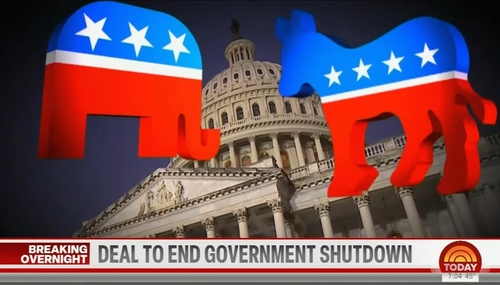When I served as Mayor during the 1990’s, the Administration and Congress helped local communities fight crime by providing funds to hire more police, and making it harder for criminals to get guns. As a result, crime decreased. Over the past few years, however, the approach seems to have been switched. Now cities are often seeing less police but more guns on their streets. These new crime statistics indicate that we’re doing things backwards. – Paul Helmke, President of the Brady Campaign to Prevent Gun Violence1
Brady Campaign’s new spokesman seems full of high-sounding verbiage these days, but the
· The “100,000 new cops” announced by Clinton amounted to less than half that in terms of real staffing increases;
· Audits found significant corruption in how the funding was spent, resulting in fewer cops being hired than was budgeted;
· More officers did not enhance law enforcement effectiveness in arresting perpetrators, as clearance rates–the ratio between closed cases versus crimes committed–actually fell.2
ATF referrals for violations of federal gun laws barely increased during the
Fewer Cops, More Crime?
Helmke promulgates this equation: Fewer Cops + More Guns On the Street = More Violent Crime. If true, right-to-carry (RTC) states, where law-abiding citizens can carry concealed handguns for defensive purposes, should have more violent crime, since there are more “guns on their streets.” Also, states with lower law enforcement officer (LEO) rates should have more violent crime. So Helmke’s equation assumes that states with both RTC and low LEO rates should be the most violent.
Sorting states by 2005 LEO rates (number of LEOs per 100,000 population) and separating them into quintiles, we find that as the LEO rate increases, so does the violent crime rate. In fairness, this correlation might exist because municipalities respond to higher crime rates by enhancing law enforcement. Nevertheless, the first quintile had the lowest LEO rate of 71.9% national average and a violent crime rate 73.3% and murder rate 55.8% national average. The fifth quintile had the highest LEO rate of 145.2% national average, also had higher violent crime and murder rates as well: 138.2% and 159.7% national average, respectively.
We also find that seven states in the fifth quintile are non-RTC states: their average LEO rate is 154.6% U.S. average, the violent crime rate is 153.1%, and the homicide rate 184.5% national average. Since these rates are higher than the entire quintile’s rates, this brings the “RTC effect” into the equation.
Separating states by RTC status, we find that RTC states’ average LEO rate is 29.7% lower than non-RTC states, yet their violent crime rate is 21.6% lower, and murder rate 30.4% lower. Non-RTC states have higher rates than the national average in all three categories: LEO, 125.4%; violence, 119.1%; murder, 129.3%. Meanwhile, RTC states average rates are less than the national average: LEO, 90.3%; violence, 93.5%; murder, 90.0%.
The one possible bright spot in all this for Helmke is to correlate violent crime trends with average LEO staffing rates for the years 2000-2005. Here we find that the first quintile (lowest LEO six-year average rate) averaged only a 0.4% drop in violent crime rates from 2000 through 2005, while the fifth quintile averaged a 6.9% reduction. This may be a pyrrhic victory, however: the fifth quintile (six are non-RTC) has double the LEO staffing rate, but also has more than double the violent crime rate, of the first quintile (all RTC states). Simplistic thinkers might conclude that more cops equals more crime, but this would be as silly claiming that more guns means more crime.7
Practice What You Preach
Helmke claims that the Clinton administration “helped local communities fight crime,” implying he supported these efforts as mayor (from 1988-2000) of Fort Wayne, Indiana. During his last five years as mayor, the national violent crime rate fell at a 7.0% faster rate, murder fell 12.6% more nationally, and rape fell 12.1% faster, while the aggravated assault rate in Fort Wayne actually rose 15.9%, trailing the national index by 38.4%. In the five years since Helmke was voted out, Fort Wayne has beaten the national violent crime index by 11.2%.8 This begs the questions: Paul, why did you fail so miserably on your watch; don’t you think you should accept personal responsibility instead of blaming law-abiding citizens you never met?
Conclusion
Helmke alleges “these new crime statistics indicate that we’re doing things backwards,” but by using his sources and criteria, current crime data shows large errors in logic and the glossing over of one vital concept: it’s not the number of guns on the streets that causes more crime, it’s who carries them. Brady and company focus on gun violence as a ploy to justify civilian disarmament, but show scant interest in reducing violent crime. Helmke’s record as mayor shows a continuation of this strategy.
Endnotes
1 Brady Campaign to Prevent Gun Violence, Brady President: Violent Crime Surge Helped By 'More Guns, Less Police' Approach,
2 Howard Nemerov, Did COPS Help? ChronWatch,
3 Howard Nemerov, Only the Truth Will Set You Free, ChronWatch, May 26, 2004. http://www.chronwatch.com/content/contentDisplay.asp?aid=21413
4 Table 1 – Crime in the United States by Volume and Rate per 100,000 Inhabitants, 1986-2005, Federal Bureau of Investigation. http://www.fbi.gov/ucr/05cius/data/documents/05tbl01.xls
5 Charles F. Wellford, John V. Pepper, Carol V. Petrie, et al, Firearms and Violence: A Critical Review, Committee on Law and Justice, National Research Council, National Academy of Sciences, Copyright 2005, pages 93-97.
6 Findings from the Task Force on Community Preventive Services, First Reports Evaluating the Effectiveness of Strategies for Preventing Violence: Firearms Laws, Centers for Disease Control, October 3, 2003. http://www.cdc.gov/mmwr/preview/mmwrhtml/rr5214a2.htm
7 Compiled from FBI data. Email request for spreadsheet.
8 Compiled from FBI data, Table 8 – Number of Offenses Known to the Police. Email request for spreadsheet.
About the Author
Howard Nemerov is a frequent guest on NRA News. He can be reached at HNemerov [at sign] Netvista.net.




